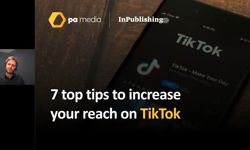
According to a dictionary, I forget which, ‘pivot’ is defined as “the point you realise everything you’ve done before no longer works and you’d better find another way of doing things, PDQ.”
That was the situation many publishers faced last March as shops closed, people were told to stay at home and the economy nosedived. Advertising and copy sales dried up, virtually overnight.
To counter that, publishers doubled down on digital delivery, something most had been experimenting with before, with varying degrees of conviction, and made it front and centre of everything they did.
The result is a much more digitally focused and agile publishing sector, with new-found confidence in its ability to engage with audiences wherever they are.
But ‘pivot’ was so 2020; no-one’s pivoting now.
Publishers are taking the best of what they did before and combining it with the best of everything that’s happened since.
Instead, as we emerge, blinking into the sunlight of the post-Covid world, the word on everyone’s lips is ‘hybrid’.
According to the Cambridge Dictionary, ‘hybrid’ is “a plant or animal that has been produced from two different types of plant or animal, especially to get better characteristics”.
Publishers are taking the best of what they did before and combining it with the best of everything that’s happened since to create an incredibly exciting new “hybrid” future.
WFH? Wasn’t that great? Got the job done, no commuting and a better work / life balance, and the bedroom is so much cheaper than prime city-centre real estate. For a while, many assumed WFH was the future, until the much derided office found its advocates who pointed out that the bedroom was pretty lousy for mental health, team building, ideas generation, company culture, staff onboarding and, actually, not so good in terms of work / life balance after all as the lines between the two became increasingly blurred. The growing consensus now seems to be that a bit of both is the way forward. In the words of one of our recent podcast guests, CPL’s Mike Sewell, the office should be for “heads-up and heads-together” activities and the home for “heads-down and getting things done” stuff.
Similarly with events. After a halting start (“you’re on mute, Bob”), virtual events worked exceptionally well, achieving a global reach unimaginable with physical events and creating a long tail of valuable on-demand content. But no-one imagines that in-person events won’t come back strong, so what if we can combine the reach of virtual with the intimacy of physical, to get the best of both worlds? In the words of Hearst UK’s Nikki Clare, speaking at the PPA Leadership Summit, in future, “the optimal event plan will encapsulate a physical event, wrapped with a virtual experience”.
It’s not just working practices and events. As we continue our journey out of lockdown, publishers will adopt the hybrid approach across all their business activities. That’s one of the big advances of the last eighteen months.
This article was first published in InPublishing magazine. If you would like to be added to the free mailing list, please register here.










